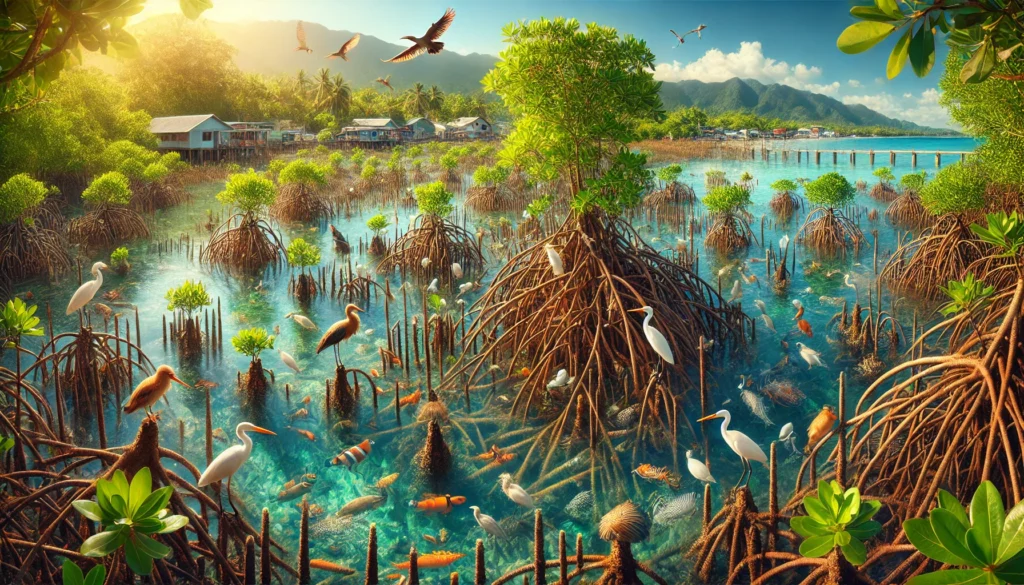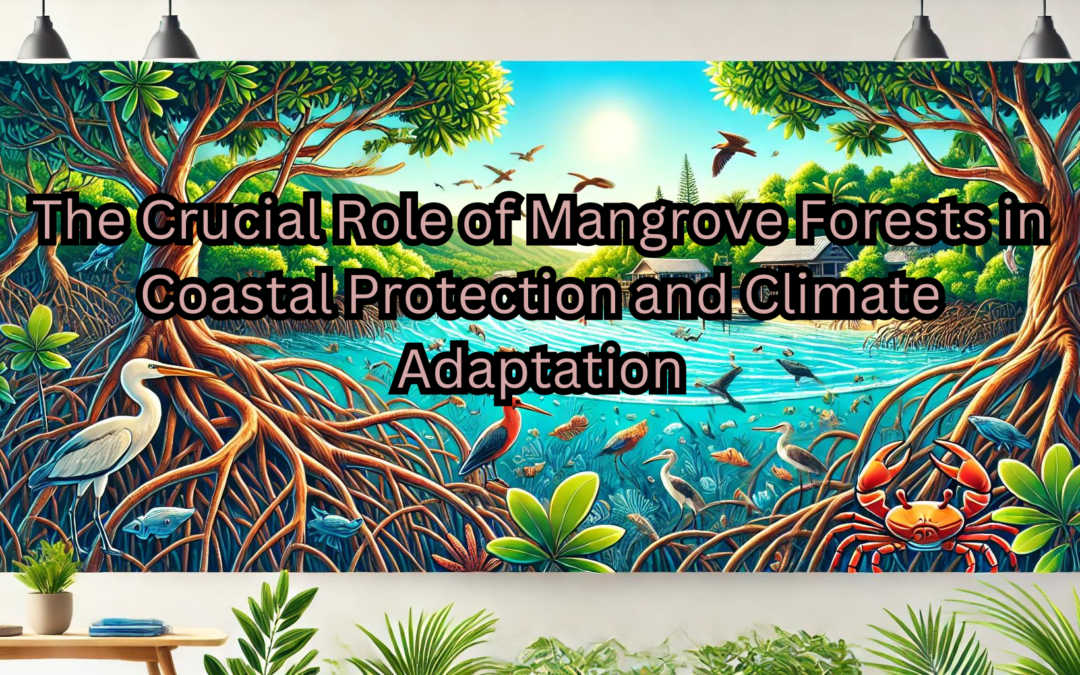Mangrove forests are distinctive ecosystems found in tropical and subtropical coastal regions. These salt-tolerant plants offer priceless benefits to both the environment and human populations. Mangrove forests significantly impact climate adaptation, biodiversity preservation, and coastal protection. This article delves into how mangrove forests protect coastal regions from natural disasters, enhance marine biodiversity, and aid in climate adaptation and mitigation.
Coastal Protection by Mangrove Forests
Mangrove trees play a vital role in mitigating sea level rise, storm surges, and coastal erosion. Their intricate root systems trap sediments and reduce the force of currents and waves, stabilizing shorelines. “Mangroves absorb and disperse the energy of powerful waves during storm surges and hurricanes,” says a coastal protection expert. This protective function minimizes damage to inland communities, safeguarding them from increasingly frequent and intense extreme weather events caused by climate change.
Biodiversity Preservation in Mangrove Ecosystems
Mangrove ecosystems are rich in biodiversity, serving as habitats and nesting sites for various marine and terrestrial species. “Mangrove forests are essential for the survival of many fish, crabs, and mollusks during key points in their life cycles,” notes a marine biologist. This biodiversity boosts the productivity of coastal fisheries. Additionally, mangroves are home to numerous bird species, reptiles, and mammals, making them crucial for biodiversity preservation. Protecting mangrove forests is essential for maintaining the biological balance and health of coastal and marine areas.
Mangrove Forests and Carbon Sequestration
Mangrove forests are highly effective at sequestering carbon dioxide and storing significant quantities of carbon in their biomass and sediments. “Mangroves are important contributors to climate change mitigation due to their carbon absorption and retention capabilities,” states an environmental scientist. By reducing greenhouse gas concentrations, mangroves support global efforts to mitigate climate change. Preserving and restoring mangrove forests can enhance their role as carbon sinks, helping to reduce global warming effects.
Climate Adaptation through Mangrove Forests
Mangrove forests strengthen coastal communities’ resilience, contributing to climate adaptation. “These communities are less vulnerable to climate change impacts due to the protection mangroves provide against coastal hazards,” highlights a climate adaptation specialist. Many coastal populations rely on the resources provided by healthy mangrove forests, such as food, fuel, and raw materials. The dual function of mangroves in adaptation and mitigation underscores their significance in comprehensive climate policies.

Challenges and Conservation Efforts for Mangrove Forests
Despite their importance, mangrove forests face numerous challenges, including deforestation, pollution, and land conversion for aquaculture and agriculture. “Coordinated conservation measures are needed to address these challenges,” urges a conservationist. Creating protected areas, promoting sustainable land-use practices, and supporting community-based management programs are vital. Restoration initiatives that replant mangroves and rehabilitate degraded areas are crucial for reversing the decline of these essential ecosystems.
Call to Action: Protect and Restore Mangrove Forests
Mangrove forests provide numerous environmental and socioeconomic benefits, playing a critical role in coastal protection and climate adaptation. Their ability to maintain biodiversity, stabilize shorelines, trap carbon, and enhance community resilience is invaluable in the fight against climate change. “Maintaining and restoring mangrove forests should be a top priority for conservation efforts,” asserts an environmental advocate.
Join us in protecting these vital ecosystems. Learn more about the role of mangrove forests and how you can contribute to their conservation by visiting the EAT Community.
Protect Mangrove Forests – Protect Our Future.
Related Articles and Resources:
- What is a mangrove forest?
- 5 natural disasters that beg for climate action
- Why Mangroves Matter
- How Change of Land Use and Deforestation is Impacting the Environment
- Embrace Nature-Based Climate Solutions for Urban Resilience
- Why Afforestation and Reforestation Are Essential for Climate Change Mitigation
- How to Ensure Environmental Health and Biodiversity


Recent Comments